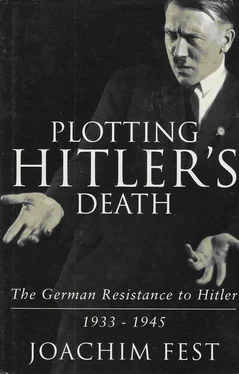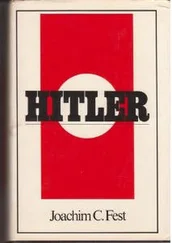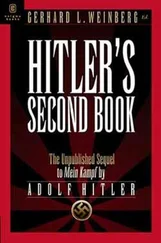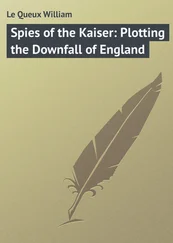24. Jacobsen, 1939-1945, 606-07; also see Groscurth, Tagebücher, 426, n. 230.
25. Halder, Kriegstagebuch, 160ff. (entry of Jan. 18, 1940).
26. See Hassell, Hassell-Tagebücher, 152 (entry of Dec. 25, 1939). For Tresckow’s comment, see Bodo Scheurig, Henning von Tresckow: Eine Biographie (Frankfurt and Berlin, 1980), 76.
27. Jodl reported Hitler’s reaction to Halder: “Distrust. Better that the soldiers don’t follow him.” See Halder, Kriegstagebuch, 97-98 (entry of Oct. 4, 1939).
28. Halder, Kriegstagebuch 105 (entry of Oct. 14, 1939).
29. Quoted in Thun-Hohenstein Verschwörer, 158.
30. Groscurth, Tagebücher, 218 (entry of Oct. 16, 1939): “Admiral visited Halder. Came back deeply shaken. Total nervous collapse. Brauchitsch also at wit’s end. Führer demands invasion. Closed to any factual objections. Just bloodthirsty.”
31. Hassell, Hassell-Tagebücher, 133 (entry of Oct. 19, 1939).
32. A thought of the former German ambassador in Paris, Count Johannes von Welczeck; see Hassell, Hassell-Tagebücher, 131 (entry of Oct. 16, 1939).
33. Groscurth, Tagebücher, 498ff.
34. Groscurth, Tagebücher, 223 (entry of Nov. 1, 1939). The description of the various, generally separate “centers of gravity” that came together only after Halder’s decision to take action is based on the presentation in Müller, Heer, 494ff.
35. Hoffmann, Widerstand, 320-21.
36. Gisevius, Ende, 418.
37. Keitel’s account; see Müller, Heer, 521.
38. See the statement that Army Adjutant and later General Gerhard Engel provided to the Institut fur Zeitgeschichte, qtd. in Groscurth, Tagebücher, 225, n. 589.
39. This is the version provided by Halder after the war to Gerhard Ritter, Carl Goerdeler und die deutsche Widerstandsbewegung (Stuttgart, 1984), 504-05. For the rest, see Groscurth, Tagebücher, 225 (entry of Nov. 5, 1939), 246 (entry of Feb. 14, 1940). For Brauchitsch’s comment, see Gisevius, Ende, 420.
40. See Deutsch, Verschwörung, 259; for V. Müller, see Müller, Heer, 534. The description in Gisevius, Ende, 423ff, is quite different.
41. Leeb said this after the war in his statement for the Military History Research Bureau; see Müller, Heer, 543. For Halder’s comments, see Groscurth, Tagebücher, 236 (entry of Dec. 10, 1939), 233 (entry of Nov. 17, 1939).
42. Together with Popitz and possibly also with Oster, Beck, and Schacht, Goerdeler had developed the plan of dropping off a few divisions in Berlin during their transfer and then having Witzleben appear and use them to disarm the SS. At the same time, Beck would drive to Zossen to “assume supreme command from the weak hands of Brauchitsch.” Hitler, according to the plan, would be “certified unfit to govern by a medical statement and kept in a safe place. Then an appeal to the people… .” Qtd. in Hassell, Hassell-Tagebücher, 153 (entry of Dec. 30, 1939).
43. Groscurth, Tagebücher, 232 (entry of Nov. 16, 1939) and 233, nn.
44. Erich Kordt, Nicht aus den Akten… Die Wilhelmstrasse in Frieden und Krieg: Erlebnisse, Begegnungen, und Eindrücke, 1928-1945 (Munich, 1949), 377. Hitler’s speech of November 23, 1939, was recorded and preserved by a number of different participants, who agree on its import. See Prozess, vol. 26, PS-789, 327ff; also Groscurth, Tagebücher, 414ff. (document 40).
45. Qtd. in Paul Seabury, Die Wilhelmstrasse: Die Geschichte der deutschen Diplomatie 1930-1945 (Frankfurt, 1956), 149. (Rosenheim is a provincial city in the far south of Germany; Eydtkuhnen is in the north.)
46. I am grateful to Jerzy W. Borejsza for this association; see “Der 25. Juli 1943 in Italien und der 20. Juli 1944 in Deutschland: Zur Technik des Staatsstreichs im totalitaren System,” Schmädecke and Steinbach, Widerstand, 1085.
47. Gert Buchheit, Ludwig Beck, ein preussischer General (Munich, 1964), 228. See also Ritter, Goerdeler, 267.
48. Hans Oster, qtd. in Deutsch, Verschwörung, 104.
1. S. Haffner, “The Day That Failed to End the War,” Contact (London, 1947), 42. Haffner’s bent for original points of view as well as the early date of this publication explain many of his excesses; his interpretation does, however, shed some light on the sociology of the resistance, a controversial subject.
2. Ulrich von Hassell, Die Hassell-Tagebücher, 1938-1944: Aufzeichnung vom anderen Deutschland, ed. Friedrich Hiller von Gaertingen, rev. and exp. ed. (Berlin, 1988), 289 (entry of Dec. 21, 1941). “The old-timers’ revolution” comes from a conversation between Stauffenberg and Leber; see Eberhard Zeller, Geist der Freiheit: Der zwanzigste Juli (Munich, 1963), 297.
3. Harold C. Deutsch, Verschwörung gegen den Krieg. Der Widerstand in den fahren 1939-1940 ( Munich, 1969), 104. For the “Oster problem,” see Kurt Sendtner, “Die deutsche Militäropposition im ersten Kriegsjahr,” Die Vollmacht des Gewissens, vol. 1 (Berlin and Frankfurt, 1960), 507ff.
4. Gerhard Ritter, Carl Goerdeler und die deutsche Widerstandsbewegung (Stuttgart, 1984), 271.
5. Apparently the atrocities in Poland also played a part in Reichenau’s readiness to commit treason. H. C. Deutsch was the first to note this remarkable episode; see Verschwörung, 76ff.
6. Deutsch, Verschwörung, 105.
7. Hassell, Hassell-Tagebücher, 207 (entry of Aug. 10, 1940).
8. Heinz Höhne, Canaris: Patriot im Zwielicht (Munich, 1976), 403.
9. Klaus-Jürgen Muller, Das Heer und Hitler: Armee und nationalsozialistisches Regime, 1933-1940 (Stuttgart, 1969), 452-53.
10. Ritter, Goerdeler, 274.
11. Qtd. in Ritter, Goerdeler, 47-48. For the earlier characterizations of Goerdeler, see Margret Boveri, Fur und gegen die Nation, vol. 2 of Der Verrat in XX. Jahrhundert (Hamburg, 1956), 26.
12. See Ritter, Goerdeler, 272ff.; Hans Rothfels, Opposition gegen Hitler: Eine Würdigung (Frankfurt, 1958), 104ff; and Hans Mommsen, “Gesellschaftsbild und Verfassungspläne des deutschen Widerstands,” Der deutsche Widerstand gegen Hitler, ed. Walter Schmitthenner and Hans Buchheim (Cologne and Berlin, 1966), 73ff. For Hassell’s contribution, see Gregor Schöllgen, Ulrich von Hassell, 1881-1944: Ein Konservativer in der Opposition (Munich, 1990), 136ff.
13. Mommsen, “Gesellschaftsbild,” 83.
14. See George K. Romoser, “The Politics of Uncertainty: The German Resistance Movement,” Social Research (1964), vol. 31, 73ff; Hannah Arendt, Eichmann in Jerusalem: A Report on the Banality of Evil, rev. and enl. ed. (New York, 1965), 97ff; and Ralf Dahrendorf, Gesellschaft und Demokratie in Deutschland (Munich, 1965), 441f.
15. Mommsen points this out and mentions Wilhelm Leuschner as the sole exception, although he can only he viewed to a limited extent as a typical representative of the Weimar Republic (“Gesellschaftsbild,” 76).
16. Qtd. in Mommsen, “Gesellschaftsbild,” 134-35.
17. Hassell, Hassell-Tagebücher, 293-94 (entry of Jan. 24, 1942).
18. For an overall assessment of these proposals, see Mommsen, “Gesellschaftsbild,” 161ff.
19. See Dorothee von Meding, Mit dem Mut des Herzens: Die Frauen des 20. Juli (Berlin, 1992), 135 (Freya von Moltke) and 198 (Marion Yorck von Wartenburg).
20. Ger van Roon, Neuordnung und Widerstand: Der Kreisauer Kreis innerhalb der deutschen Widerstandsbewegung (Munich, 1967), 187.
Читать дальше




![Traudl Junge - Hitler's Last Secretary - A Firsthand Account of Life with Hitler [aka Until the Final Hour]](/books/416681/traudl-junge-hitler-s-last-secretary-a-firsthand-thumb.webp)







